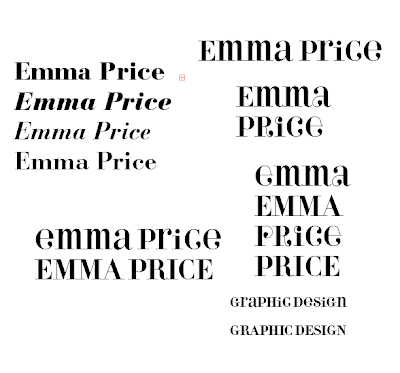Before going to HW I came up with a few questions to ask them. Since there were a few examples of their work on their website which involved interactive design I thought it might be a good chance to try and get some research done for my dissertation. I wanted to ask them about the budget constraints and the role of interactive design for public spaces. I also wanted to ask whether technology such as the iPhone and iPad has had an effect on the want for interactive design for museums etc. When I was actually there it turns out that the interactive parts of their displays aren't designed by HW and so I wasn't really able to find out the information I wanted for my dissertation research.
I did however find out a lot about workload and the way the studio is run. I also got the chance to discuss their work/design decisions and got a lot of portfolio feedback too. The discussion was between myself and two of the graphic designers; Victoria and Matteo
The way HW works is a lot different to NBD and so already the comparison between them is quite a positive thing to see. Because rather than feeling the need to change the way I work to try and fit into a certain studio it seems as though it's probably better to develop my own design practice and at the same time be looking for studios who work in a way that I could fit into.
Firstly HW:
The design team separate work depending on workload rather than specialisation's. There is a mix of editorial, way finding and maps. This is really different to NBD who work mainly with type.
HW don't work with exhibition designers but they do work with architects, sound and lighting specialists. Freelancers are then commissioned for coding and illustration.
To test designs they will always print to scale else everything is based on assumptions. It needs to be printed to scale to allow for analysis. They also do have some guidelines to help.
When doing floor plans and maps etc they are given floor plans of the spaces but it's also important for them to visit the places during the design to test to ensure the designs work. Especially with signage systems. Victoria mentioned a quotation which was 'a sign shouldn't be noticed but just inform' which is quite interesting to think about.
The projects vary in length, they are working on one at the moment which has a duration of 5 years and they are working alongside engineers to help with the mechanics of the signs.
To help project manage HW have meetings on Monday mornings to discuss workload and deadlines. And to set deadlines for the end of the week. If someone has a deadline coming up then they'll all work together.
They do work across both print and screen, however for screen they will design the layouts etc and then bring someone else in to code everything.
The 'red' project was something I was quite interested in, it started at Christmas with bags sent out to clients and they started to receive photos back. It wasn't planned as an interactive piece of design but that's how it's evolved and it's seen as a good way to keep in touch with clients.
Every 3 or 4 months they rotate their design roles. Also every 3 or 4 months exhibitions change and so everything needs updating on maps, colours, signs etc. So it's important that the initial designs can be adapted.
To gain clients HW go to pitches/tenders but clients also approach the studio.
Portfolio Advice:
Try to aim to include about 6 projects
Include another larger project
Include projects that aren't finished yet, end your portfolio with something you're working on
Good to start with a project which relates to the studio you're showing it to
Perhaps include a 'mood board' page which explains what they have at the moment (e.g Nat Hist), what's not working, why you're changing it
Show some of the process/other options of designs.
Re-order the pages of the projects so that the final product shots come last.
I'm now in the process of trying to sort out a placement with HW for over the summer.







